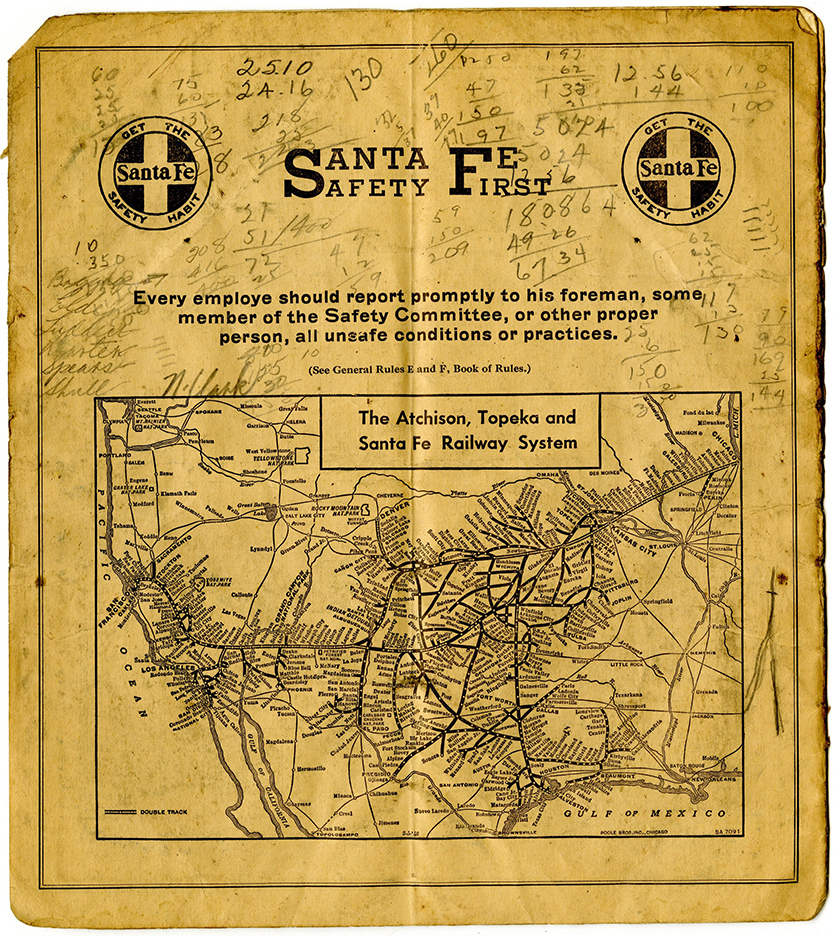This piece by former Texas Collection director Kent Keeth originally was published in The Baylor Line in September 1976, then was reprinted in Looking Back at Baylor (1985), a collection of Keeth and Harry Marsh’s historical columns for the Line. Blogging about Texas periodically features selections from Looking Back at Baylor, with hopes of sharing Keeth’s work with a new audience.
This January marks the 91st year since the accident that took the lives of the Immortal Ten. We take a moment to remember those were lost, and learn more about one individual in particular. Please note, that this publication stated the Immortal Ten accident occurred on January 21, 1927 but further research shows that the accident occurred the following day, January 22, 1927.

One of the greatest tragedies that Baylor has ever experienced occurred on January 21, 1927. On the morning of that day the university bus carrying the Bear basketball team to a game with the University of Texas, travelling in a misting rain on a slick road, collided with an Illinois and Great Northern railway train at a level-grade crossing in Round Rock. Ten students were killed in the accident, and most of the other passengers were injured. The university, Waco and the state were stunned by the catastrophe. Hundreds of messages of condolence poured in from individuals, groups and other universities; and a crowd of three thousand attended the memorial service held on campus for the victims. Among those killed was Clyde “Abe” Kelley, Baylor’s all-round athlete and star halfback of the 1926 season. Described as being equally proficient in football, baseball and basketball, Kelley had been selected only a month before his death to be captain of the 1927 Bear football team. In tribute to his ability, and perhaps also as a memorial to the “Immortal Ten” who died in the wreck, Kelley’s captaincy of the team was not rescinded. A newspaper article datelined Waco, August 6, 1927, (sent to the Baylor Line by James A. Fox Jr. ’28 of Lufkin) announced: “The spirit of Abe Kelley again will direct the Baylor Bears when the Green and Gold jerseyed football team takes the field next month to make a try for honors in the Southwest conference. It was decided not to elect another captain, but to let “Abe” continue to run the team in spirit, if not in actuality. A member of the team will be appointed before each game to act as captain.” The “spirit of Abe Kelley” continued to manifest itself on Baylor’s campus for some time. Nearly five years after the accident Dave Cheavens, who had traveled with the team that day as sportswriter for the Lariat, described the incident to the student body. “I saw Abe Kelley pick up his best friend and throw him out the [bus] window when he could see the train bearing down to a certain crash. That was the true Baylor spirit.” The impact of the tragedy was not confined to Baylor. Among the many Texas newspapers which editorialized against the level-grade crossings used by railways throughout the state, the Daily Texan, student publication of the University of Texas wrote: “The slaughter of ten men of Baylor University . . . brings home to Texas the tragedy attendant on the grade crossings which at resent exist by the thousands in Texas. The only thing that will entirely remove grade crossing deaths is their complete elimination. This accident was preventable.” Other publications and groups continued to prosecute the campaign against level-grade crossings, and with the recent Baylor incident to support their arguments, they succeeded in bringing their message to the ears of state highway planners and railroad officials. The November, 1937, issue of Texas Parade—at that time the organ of the Texas Good Road Association—published a photograph of a recently completed railroad underpass at Round Rock. The picture’s caption read: “Had this underpass been in existence eight years ago several Baylor students would not have been killed.” Because the 1927 Round Rock tragedy epitomized the need for improved standards of safety in highway construction, its long-term effects have been beneficial. Texas motorists for the past fifty years have traveled under the protection of the spirits of Abe Kelley and the others of the Immortal Ten.

![Cunningham, Eugene. Famous in the West. El Paso, TX: Hicks-Hayward Co., [1926]. Print.](https://farm5.staticflickr.com/4737/27679186229_438e5ec3a1_o.jpg)
![College, Belton: For Women. [Belton, TX?]: [publisher not identified], [between 1925 and 1929?]. Print.](https://farm5.staticflickr.com/4735/38748265324_f4cffd98a7_o.jpg)
![Waco 52 Playing Cards. [Waco, TX]: [publisher not identified], [2017]. Print.](https://farm5.staticflickr.com/4646/39426131812_df48b1b35b_o.jpg)





![Mission San Antonio de Valero [The Alamo] by Donald Yena](https://farm5.staticflickr.com/4447/38093854391_b4f16473aa_o.jpg)
![Armstrong, Yvonne M. Black Trailblazers of San Antonio, Texas: Their Businesses, Communities, Institutions and Organizations. San Antonio: Inkbiyvonne, [2006]. Print.](https://farm5.staticflickr.com/4473/38041078916_203bf506f6_o.jpg)
![The Majestic Hotel and Bath House Co. [Marlin, Texas?]: [publisher not identified], [between 1908 and 1920?]. Print.](https://farm5.staticflickr.com/4486/26317334539_6cca6730c7_o.jpg)
![Jordan, E. P. Souvenir of Austin, Texas. Brooklyn, N.Y. : Albertype Company, [1907]. Print.](https://farm5.staticflickr.com/4506/37384595144_12a70af086_o.jpg)

![Ellis, Edward Sylvester. Lightning Jo: The Terror of the Santa Fe Trail. New York: Beadle and Adams, [1874]. Print.](https://farm5.staticflickr.com/4490/37343412066_4a2746c1b7_o.jpg)


![Fourteenth Annual Panhandle-Plains Dairy Show: Premium List. [Plainview, TX]: [publisher not identified], 1941. Print.](https://farm5.staticflickr.com/4354/36065783204_711d47982e_o.jpg)
![The Story of the S·M·S Ranch. [Stamford, TX?]: [Swenson Bros.?], [1919]. Print.](https://farm5.staticflickr.com/4378/36503321190_45891d11e8_o.jpg)
![San Antonio, Tex. New York: Rotograph Co., [1905]. Print.](https://farm5.staticflickr.com/4353/36065783214_53b724bea2_o.jpg)

![Sullivan, John H., Jr. "Gun-play" by the World's Fastest Revolver Shot "Texas Jack.” [United States]: [publisher not identified], [between 1932 and 1937]. Print.](https://farm5.staticflickr.com/4323/35483069393_446e44e273_o.jpg)
![West-Texas: Das "Land der Gelegenheiten.” [Dallas, Texas?]: [publisher not identified], [1906?]. Print.](https://farm5.staticflickr.com/4313/35483069453_4623250a2f_o.jpg)
![Texas Prohibition Songs. Waco, Texas: Published and for sale by B. H. Simpson, [between 1900 and 1935?]. Print.](https://farm5.staticflickr.com/4326/36155260131_fd4d95bb10_o.jpg)


